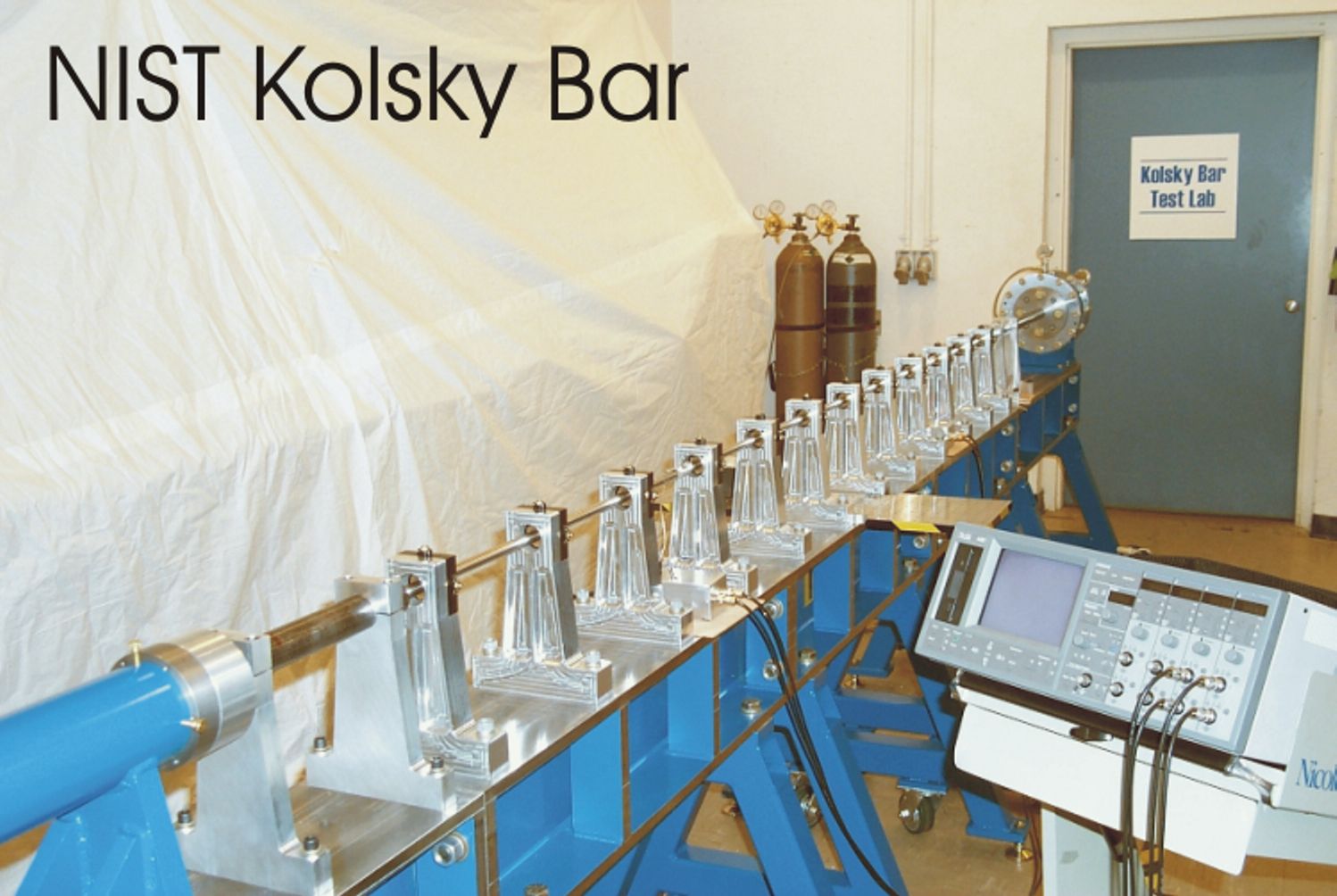| * |
|
Materials Performance - Extreme Conditions
Summary:This project provides property data, metrology, and standard test methods for materials systems under extreme conditions for areas critical to US manufacturing, homeland security, and energy infrastructure. Machining research, soft body armor standards and building safety highlight our current materials focus areas of lead alloys and steels for fire-resistant construction and pipelines. Description:The optimization of high-speed machining processes through powerful finite element modeling techniques is an important pathway to American manufacturing competitiveness in an increasingly competitive global marketplace. Quantitatively accurate simulations of machining rely on robust constitutive models of workpiece materials under real machining conditions. To this end, the Metallurgy Division has worked with the Manufacturing Engineering Laboratory to develop measurement methods for the deformation behavior of steels at high strain rate during Major Accomplishments:In 2007 we established firm uncertainties four our pulse-heated Kolsky bar measurement data that accounted for the effects of the graphite foil pads required to heat the sample electrically without damage from arcing. Using these uncertainty estimates, we quantitatively analyzed the strength of steel subjected to rapid heating and loading rates in support of machining research. Building on earlier studies, we measured the response of rapidly heated eutectoid steel near the austenitizing temperature and found that the kinetics of this transformation depend on heating rate, in agreement with rapidly heated dilatometer experiments reported in the literature. Unlike the dilatometer technique, we are also able to measure the strength of the thermally evolving steel structure in order to better understand how steel behaves during high speed machining. Our new, customized high-speed digital image correlation (DIC) instrument greatly expands the metrological capabilities of our Kolsky bar. With it, we can measure rapid multi-axial deformation of more complex structures such as whole bullets, which involve unique shapes and multiple materials. Coupled with finite element simulations, unprecedented insight into the constitutive behavior of multi-component structures can be developed under extreme, yet highly controlled heating and loading conditions. Constitutive models of bullet lead and jacket materials developed in-house will be evaluated and compared with those available in the literature to determine their suitability for use in high-fidelity models of bullets impacting soft body armor being developed elsewhere. Working through ASTM-International, we are also developing standards for evaluating the performance of new grades of fire-resistant construction steel. These steels, intended as drop-in replacements for existing construction steels, provide enhanced high-temperature deformation resistance. Their retained strength at high temperatures is improved, allowing extra time for occupants to exit buildings. |
 Start Date:October 2, 2006End Date:ongoingLead Organizational Unit:mmlSource of Extramural Funding:NIST Office of Law Enforcement Standards Customers/Contributors/Collaborators:Richard Rhorer (MEL)
Facilities/Tools Used:
Staff:Steven Mates (project leader) Associated Products:Project Summary (PDF) Contact
General Information: Steven Mates |
